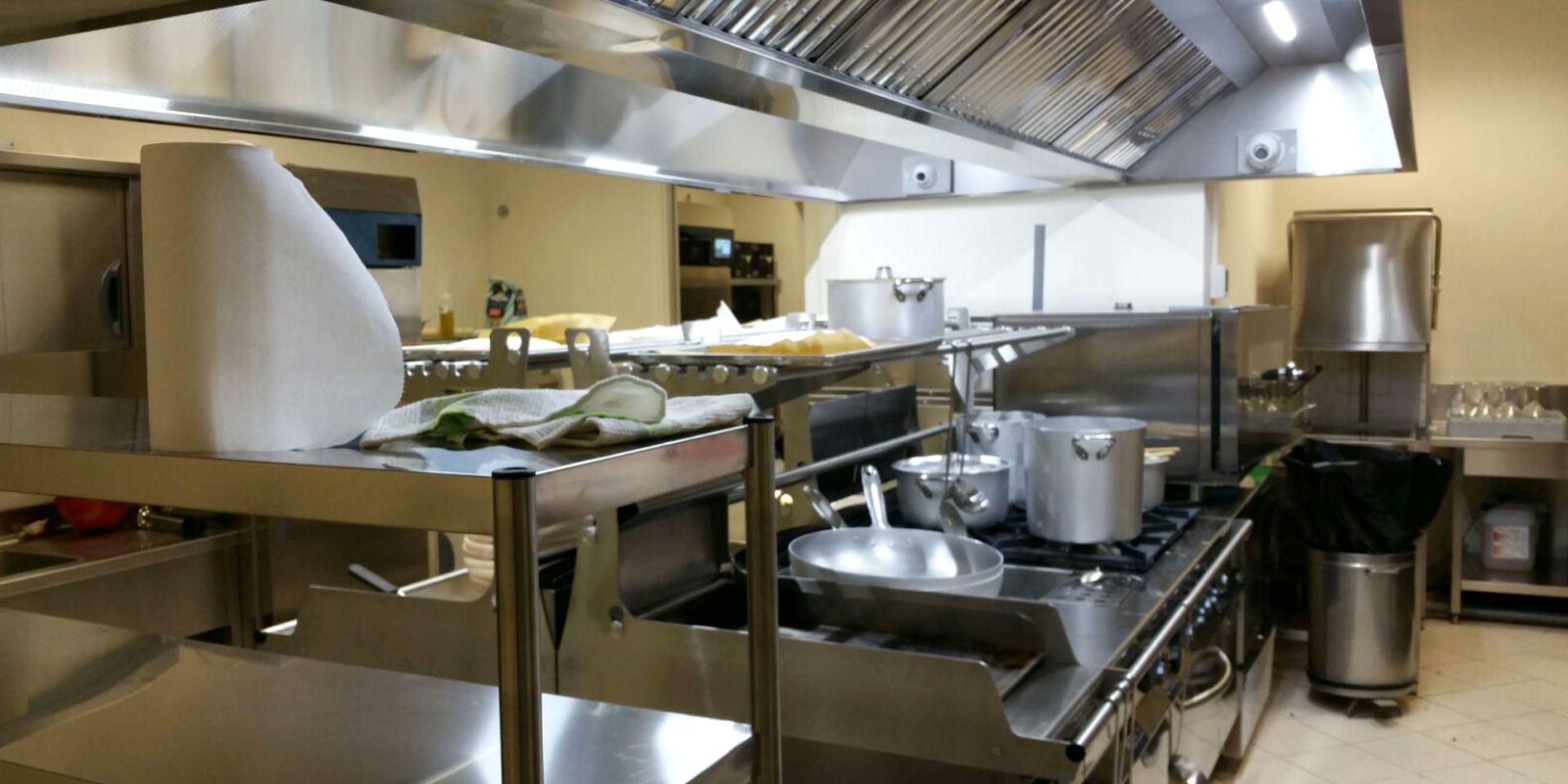
COOKING
One of the questions almost as old as pasta is: should water be salted before or after boiling?
Well, it doesn’t make any substantial difference.
Throwing salt into cold water would make it boil later? Yes. But…
Adding salt to the water increases its boiling point elevation (BPE). However, to increase a litre of water by 1°C, 58 grams of salt should be added, when the average quantity used for an “edible” pasta is one-tenth of that. So, basically, when we add salt to cold water, we’re raising the boiling point, although imperceptibly.
By throwing the salt into the boiling water, do you see the bubbles more conspicuous and “vigorous”?
The reason is not that salt boils the water first (nor more, nor better). Rather the salt crystals act as “nucleation sites”, which, briefly and roughly, help water to form a vapour.
You may have heard that if salt is thrown into cold water, touches the bottom before dissolving and this can form small points of corrosion (“pitting“, technically speaking).
True. But… in practice, the quantity of salt is so small, and the pan is normally of corrosion-resistant steel: nothing that a good clean wouldn’t counteract effectively.
Besides that, the white dots we see on the bottom of the pot are most often due to limescale!
The point is: whenever you feel throwing the salt, do it. And cook using Inox Bim Cooking Range!
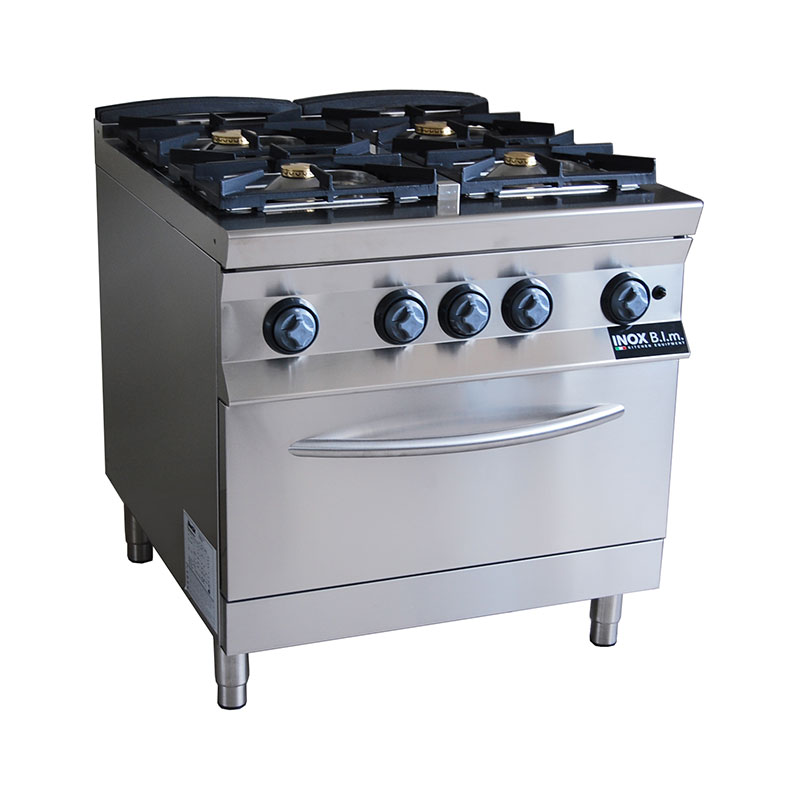
GAS BURNER RANGES
Ever heard of the story of the boiling frog?
Shortly: if you put it in a pot filled with tepid water and gradually heat it, the frog will remain in the water until it boils to death. Allegedly, the frog does not perceive the danger, being not able to detect the gradual increase in temperature.
This is one of the most used tales in motivational posts.
And, just like 9 tales out of 10 that are used for motivational posts, is a total BS.
The poor frog would notice the temperature change as soon as the water overpass its critical thermal maximum; at that point, the amphibian would try to escape in any way possible.
In conclusion: Inox Bim has a great range of gas burner ranges.
Just make sure it is for cooking and not for boiling live animals.
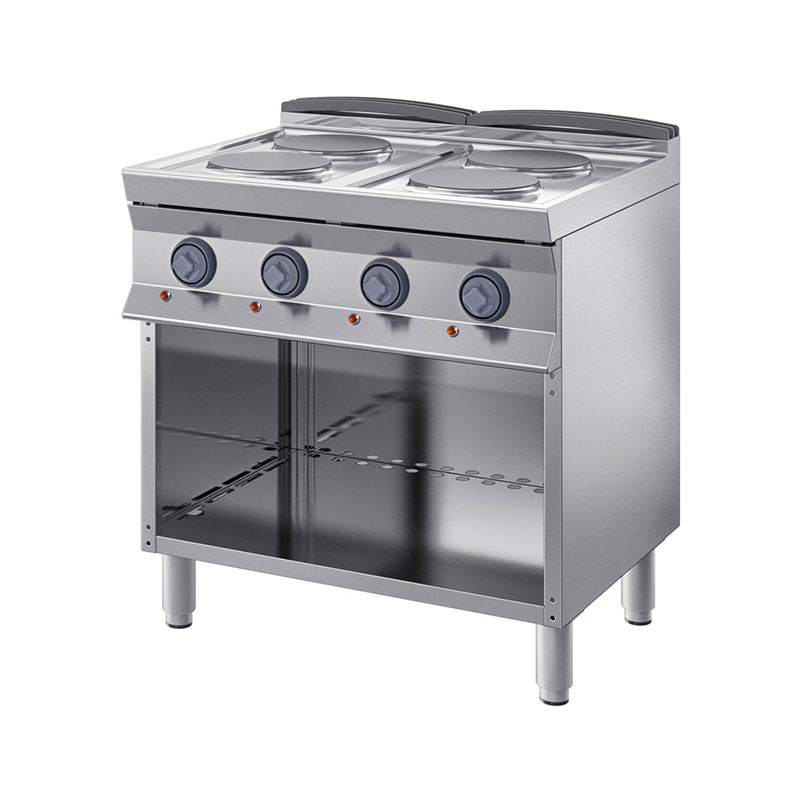
ELECTRIC BURNER RANGES
Do you like amber? Yeah, who doesn’t!
That gem made of fossil plant resin is awesome. And it was appreciated since ancient times for its vivid colours and brilliance. In fact, it has been used for millennia to produce a variety of jewels, furnishings, and decorative objects.
And did you know that electricity was actually named after the amber?
Let’s take a step back to 6th century BC, in Greece.
Thales of Miletus, philosopher, mathematician and astronomer whose echo is still alive today, is playing with a small “stone” of amber. Suddenly, he discovered that the gem, if rubbed, begins to attract some small objects, such as specks and hair, as well as producing sparks when rubbed with another material such as woollen cloth.
The good ol’ Thales (or whoever instead of him, difficult to discern myth from reality after all these centuries) then called this phenomenon élektron, precisely the name of amber in ancient Greek. Hence the name of electricity.
Inox Bim, among its gems, also has an excellent choice of electric range cookers!
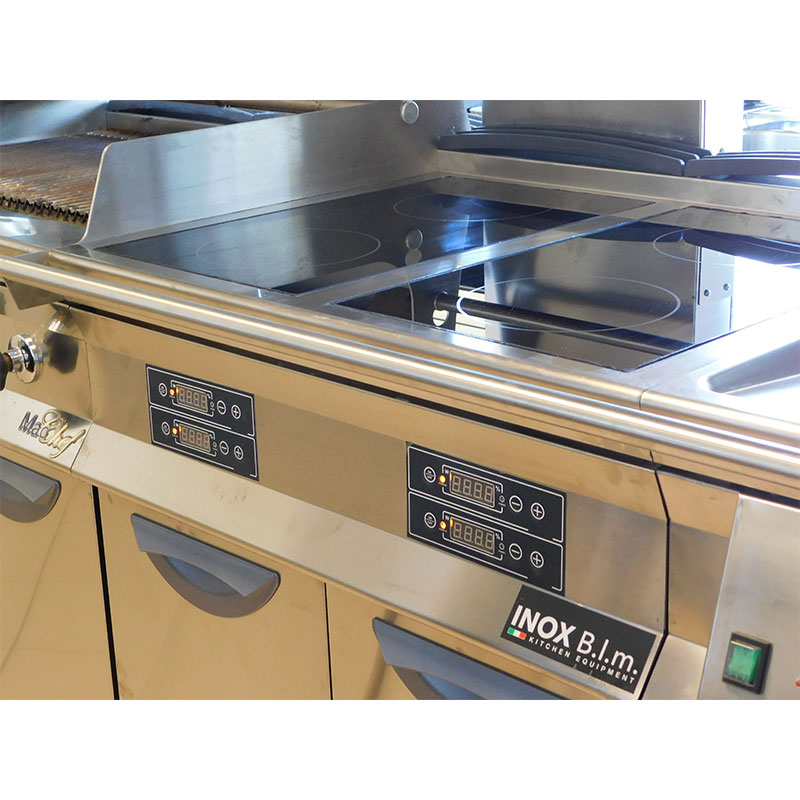
INDUCTION BURNERS RANGES
If there was one thing Michael Faraday couldn’t stand, this was cacophony: the unpleasant feeling one gets from hearing awkward-sounding words.
The eminent scientist commissioned his friend, William Whewell (who in addition to being a scientist himself was also a real “wordsmith”) to find the terms now necessary in that science that they were gradually discovering: electromagnetism.
And here we go: “diamagnetism“, “electrode“, “anode“, “ions” (“anions” and “cations“).
He couldn’t make his mind between “cathode” and “skaiode“. Eventually he went for the first (even if I’m sure we all agree the latter is way cooler).
And “Bicarburet of hydrogen“, which sounded magnificently to me. But some killjoy had to change it into “benzene” for some reason…
But what Michael wanted to be called?
Not “physicist” for sure. He despised, in his own words, the “akwardness of three separate sounds of i“.
In his later years, he was offered a knighthood by the Queen Victoria herself. He turned the offer down.
He said he was happy with the way “plain Mr Faraday” sounded.
In the picture, the Inox Bim induction cooking range.
It heats the cooking vessels thanks to Faraday’s law of induction.
And it doesn’t even sound bad.
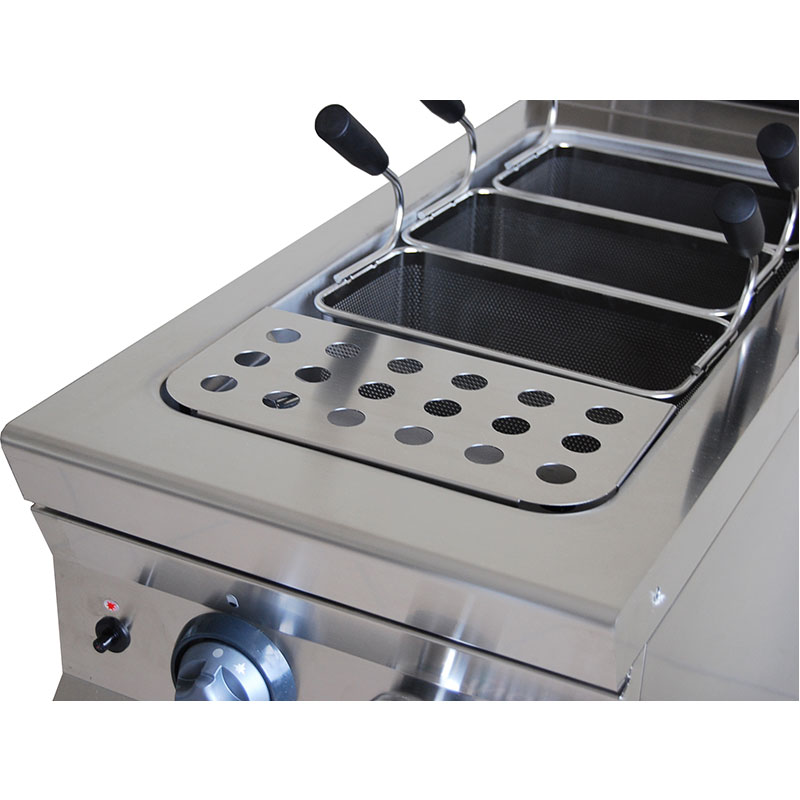
PASTA COOKERS
Filippo Tommaso Marinetti was the founder of Futurism, an artistic and political movement born in the years between the world wars in Italy.
Futurism advocated modernity, industrialism, war, and the values of virility, youth, and courage. In short, the birth of a new and modern man.
Marinetti also proposed to abolish pasta. The artist reckoned this to be one of the worst weaknesses of Italians. He even asked Mussolini to consider making it illegal by law.
In his own words: “Pasta kills the noble, virile and warrior soul of the Italians“.
And especially one of his most (in)famous slogan: “Spaghetti is no food for fighters“.
It didn’t take long before Marinetti was photographed in a restaurant in Milan in front of a bowl full of steaming spaghetti.
Unfortunately for Marinetti, many fascist censors loved pasta. And they did not miss the opportunity to allow the publication of those photos to ridicule the intransigent opponent of the pasta caught while deliberately damaging his “noble, virile and warrior soul“.
In conclusion, either you feel like a fighter or not, it doesn’t matter.
Eat pasta and bear in mind that Inox Bim can provide you with an excellent range of pasta cookers!
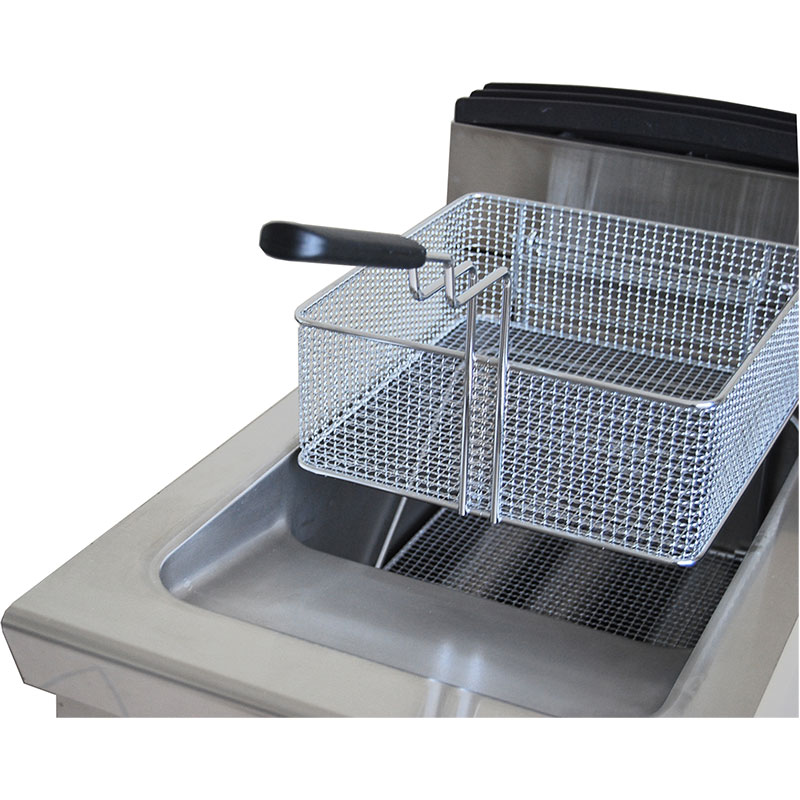
FRYERS
French fries, fries, chips, crisps, finger chips and what else… The thin-cut fried potatoes recipe is so controversial that, probably, this is the main reason they have been given so many names!
A Belgian historian (J. Gérard) found in a manuscript, handwritten by one of his ancestors in 1781, stating the habits local people had in a few cities of the modern Belgium “to catch little fishes in the Meuse to improve their everyday diet. When the water freezes, they cut potatoes into the shape of fish and deep-fat fry them in the same way”. This culinary tradition, according to this manuscript, had been going for more than hundred years, at the time of the Spanish Netherlands.
Now, this story seems a bit odd to a few Monsieur Gérard’s colleagues: the fats were not an economic product at that time, hence is very unlikely that low-class farmer had the chance to buy them in the quantities needed for frying. And, in addition to that, potatoes were not commonly known in that area before XVIII century.
So… what do we know for a fact?
In between decades ‘30s and 40’s of the XIX century, Frédéric Krieger (aka “Fritz”), a Bavarian guy raised in a fairground family, used to travel all over Belgium with his booth, making “Paris-style fried potatoes”. If you asked him where he learned to make those delicious pommes frites, he’d have told you: “in Paris, when I was a chef apprentice”.
Then Belgians, French, Americans, Spanish… they have all been claiming the paternity of the most famous street food worldwide.
But if you think ignoring which nation you have to be thankful to is not enough to make you stop making fries (or chips, or whatever), Inox Bim makes a wonderful range of Electric and Gas Fryers!
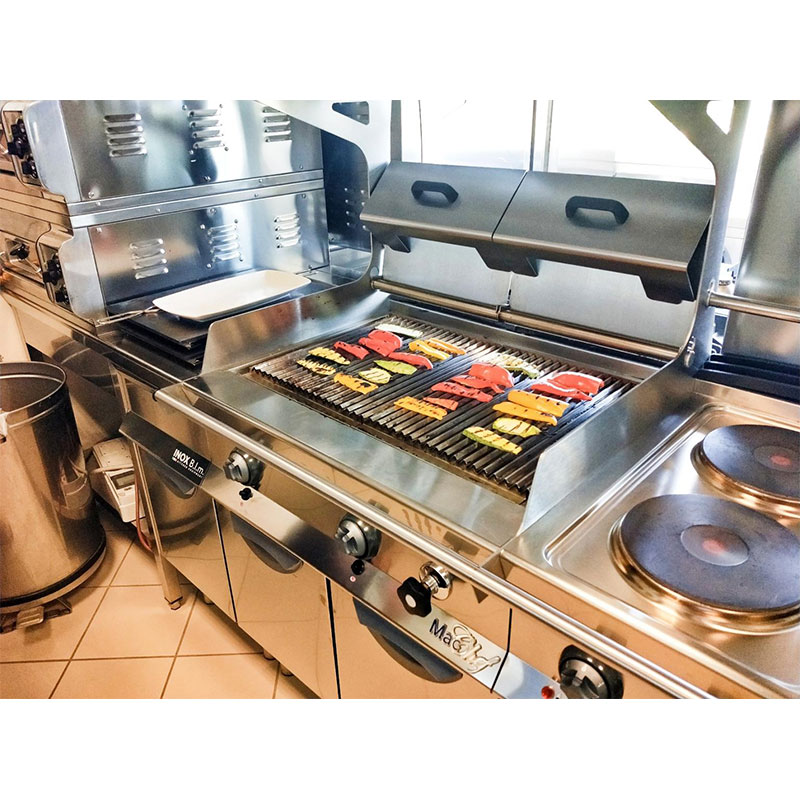
COMBI-GRILL
Did you know vegetables have their own biography?
Well, they do.
It is called in fact “Vegetables: a biography“, and it was written by the French journalist Evelyne Bloch-Dano (who also wrote biographies of a few human beings).
What the book is about shouldn’t be hard to guess.
Yes… Vegetables.
Vegetables as seen from different perspectives: historical, scientific, agricultural, sociological, culinary and so on.
My point is: you don’t have to read it to properly grill some vegetable.
You just need the right equipment.
Just like Inox Bim Combi Grill!
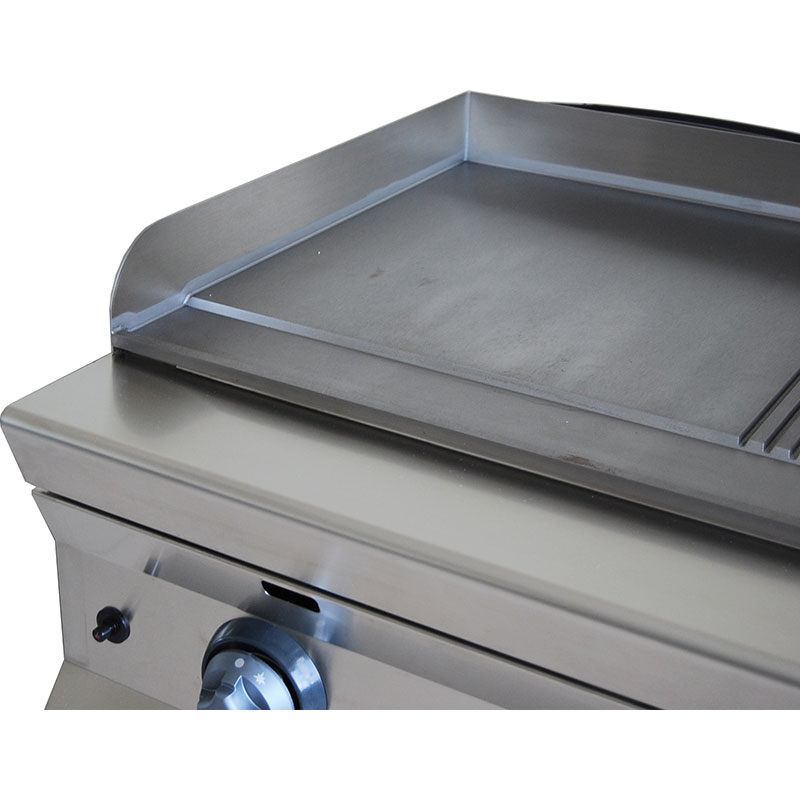
FRY-TOPS
And the Hamburger? Where did it come from?
Here is another mystery of gastronomy: a tangle that culinary historians have been trying to unravel for decades.
I will not list all the conjectures relating to it though: there are too many, some are sensible, others completely imaginative.
The most shared theory states the Hamburger landed on the Atlantic coast along with immigrants from Central Europe, mainly German-speaking Ashkenazi Jews. Now, who says that the name owes it to the ship on which the immigrants arrived at Ellis Island, and on which this dish was cooked; some other that it comes from the “Hamburg Steak“, a spicy and slightly smoked beef medallion, which thanks to its durability had become popular even among the poorest classes of the population.
Or that the hamburger is nothing more than a reinterpretation, made by taverns in the New York harbours area, of the frikadellen: large “crushed” and lightly fried meatballs, still known today by this name in northern Germany and Scandinavia. The frikadelle, at first translated as “Hamburg-style steak“, soon took the abbreviation it is known by today.
In short, call it what you like. If you want to cook it, the Inox Bim Fry-top is for you!
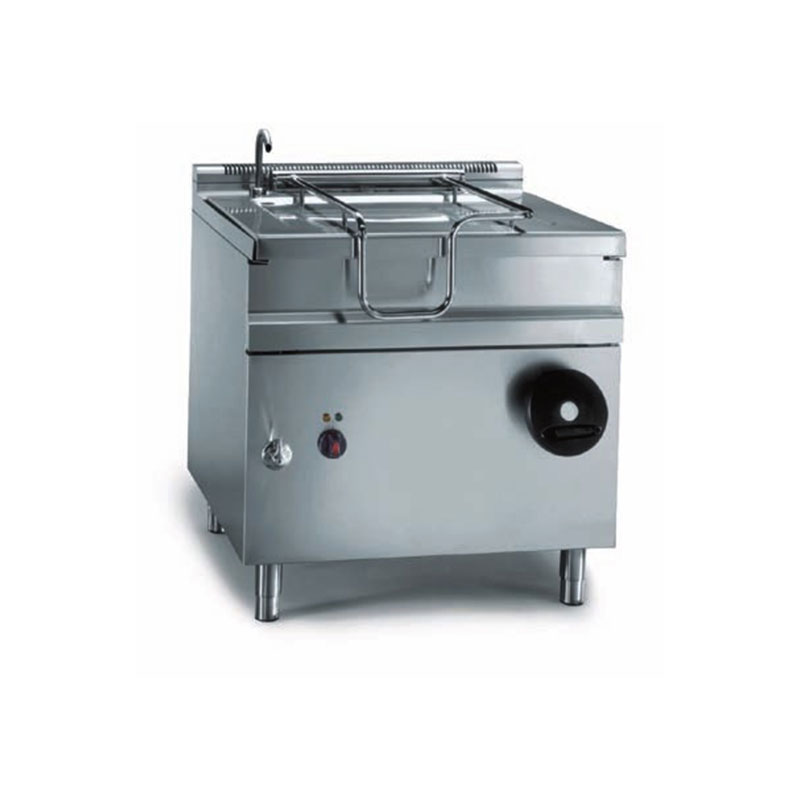
BRATT-PANS
One of the best-known symbols of French cuisine in the world is the “coq au vin” (stop giggling!): a cockerel, or simply a chicken, marinated for a long time in wine and then braised. Despite being quite complicated, it’s an exquisite dish, cooked in the most exclusive restaurants all over the world.
The dish is most likely of late medieval origin, although the first mentions in recipe books only occur from the second half of the nineteenth century. But let’s forget about the story, and let’s look rather at the myth, which dates back to the times of the Gallic Wars…
Vercingetorix, the legendary chief of the Gallic tribes, seeing himself besieged by the legions of Julius Caesar near the city of Alesia, sent a rooster, one of the rustic ones, to his opponent as a sign of defiance. In that way, Caesar would have understood how combative and tenacious were the Gauls.
The future emperor of the Romans reciprocated inviting him to dinner, in which he made served delicious poultry, soaked in a dark red sauce.
After having feasted, Vercingetorix asked Caesar: “What was that delicious dish we ate tonight?”. The Roman General explained how that was Gauls’ tenacious and combative rooster, marinated in red wine and cooked slowly….
So, according to this legend, the dish is Italian, right?
But anyway, Romans, Gauls, French or Italians… it doesn’t matter! For these and other slow cooking, use the Inox Bim stainless steel Bratt-pan!
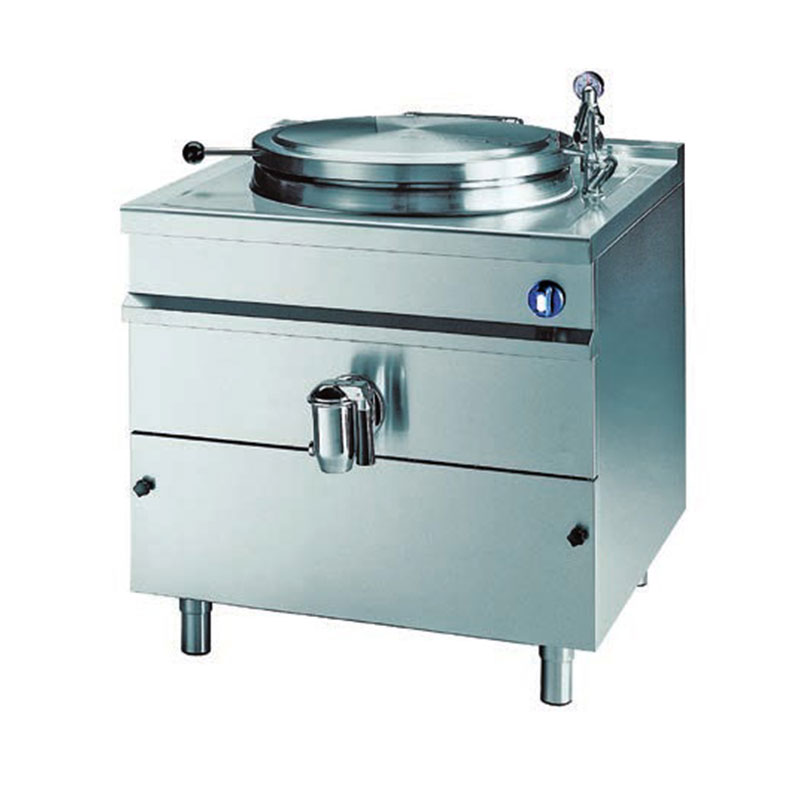
BOILING PANS
The tale of the stone soup has been told for centuries all over Europe, from the Atlantic to the Urals.
Once upon a time a traveller after days of wandering, arrived in a village.
He carried with him only an old pot. Being hungry, he asked the locals if they could give him some ingredients to make a soup.
The villagers ignored the request: having not seen many strangers around there, they were wary of that wanderer…
So the traveller took a large stone from the river and thrown it into the pot, light a fire and start stirring.
The locals, now curious, asked the man what he was doing.
He said he was making a stone soup, a really delicious meal that he’d have been happy to share with the villagers, if it wasn’t for one small problem: he didn’t have all the ingredients the recipe needed.
The locals, now willing to have a bit of what sounded like an exotic specialty, started bringing garnitures and seasoning: onions, spices, potatoes and so on…
Once the pot was full, the wanderer removed the stone. In front of the crowd wondering why he had taken away the main ingredient, he replied that wasn’t edible, and began serving the soup to everyone.
The moral of the story is: Inox Bim has a range of electric and gas boiling pans.
And something about sharing and such…

BAIN-MARIES
If you’re into cooking (either as a hobby or for work) you probably cook with a bain-marie on occasion.
But have you ever wondered why it is called like that?
Probably not. And that’s absolutely normal, I’d say.
But, considering we’re into the topic now…
It is named after Mary the Jewess, an alchemist lived in Egypt during the Roman Empire era (around 1st century AD). She is believed to be the first alchemist in the Western World (at least, the first whose existence we can be sure of).
She is credited with the invention of kerotakis, an airtight container used to create vacuum and sealing hermetically a container, and with tribikos, a rudimental distiller.
But what is more important to the professional chef and/or amateur cooks all over the world is the Balneum Mariae (Mary’s bath), which consisted of two pans: an inner pan was gently heated by a liquid in the outer pan, which was warmed by the direct flame. Doing so, the alchemist (and later the cook) could be sure that the maximum temperature reachable was the boiling point of the liquid in the outer pan (for instance: 100C, if it’s water).
Ok, the professional bain-marie by Inox Bim is made out stainless steel, with thermostat and electric parts.
But still… Thank you Mary!
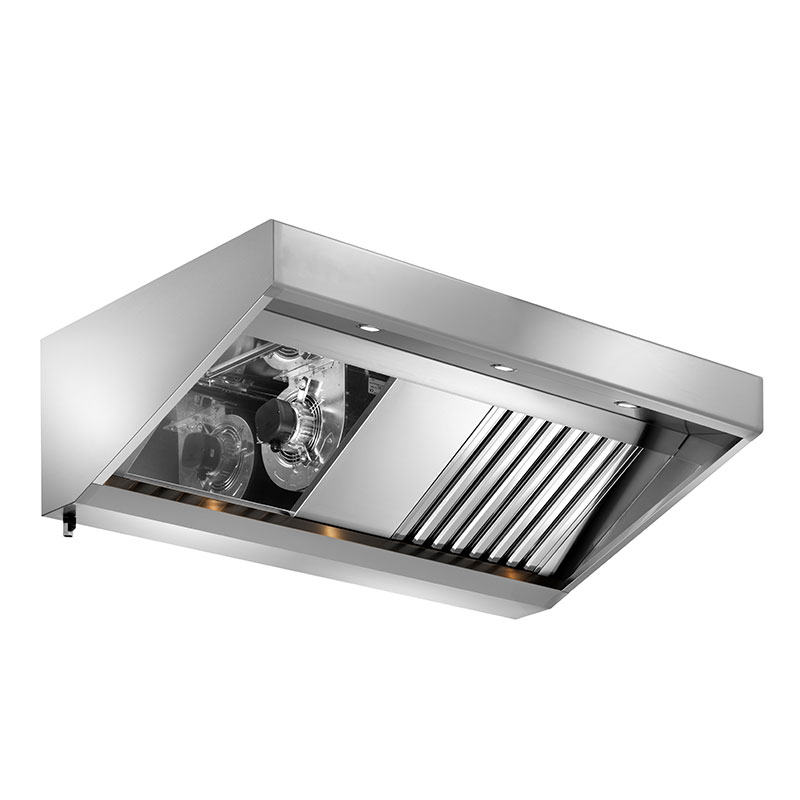
EXTRACTION HOODS
Leonardo Da Vinci also dealt with catering equipment.
At least, He designed them (and probably never built them. Leonardo wasn’t very consistent…).
In fact, in the Codex Atlanticus, the extraordinary collection of drawings and notes created by the artist/inventor par excellence, in folio 21 recto (dated around 1480) there is a rotisserie, moved by the hot air through a propeller positioned inside the fireplace, right there where the fumes and hot air convey.
In the caption, Leonardo wrote: “This is the proper way to cook roasts“.
Curiously, he wrote it “normally”, from left to right, not using then his own style of “mirror writing” from right to left.
In a nutshell, Leonardo had theorized an extraction hood that exploited the cooking vapours to operate a motion transmission system.
Let me be clear, no one wants to put themselves on the same level as the Genius of the Renaissance here…
But if you need an extraction system for your restaurant with heat recovery, condensation or other types of technologies, just give me a shout!

 Italiano
Italiano
